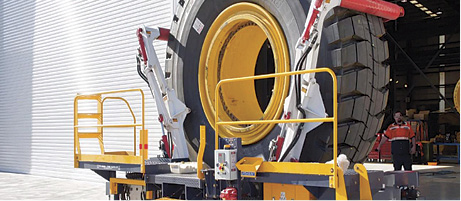Power Regeneration: Redefining How You Work

By Jessica Horn, Product Manager, Bucher Hydraulics
In the ever-changing landscape of mobile hydraulic applications, there is a constant search for better efficiencies, greater controllability, and more cost-effective solutions. Consumers ask questions such as:
- How can we increase productivity and extend operating time?
- Can we recoup the energy that would otherwise be lost as heat?
- What can we do to minimize our carbon emissions and conserve energy?
- How can we reduce the overall cost of owning our equipment?
With these questions in mind, integrating regenerative solutions for mobile hydraulic applications has emerged as an exciting new opportunity. These solutions provide significant benefits by recovering energy during lowering operations and returning that energy to the batteries. This approach helps mobile hydraulic systems be more efficient and environmentally friendly.
Benefits of Regenerative Solutions in Mobile Hydraulics
- Increased Productivity — By recovering energy and extending the operating time between battery charges, these systems enable increased no-idle time, boosting mobile applications’ productivity.
- Improved System Efficiency — By reusing energy that would otherwise be lost as heat and optimizing system design, less energy is required for lifting.
- Environmental Sustainability — As companies focus on minimizing carbon emissions and energy conservation, regenerative mobile hydraulic solutions will contribute to a more sustainable strategy.
- Greater Controllability — Advancements in motor technologies, paired with Bucher’s innovative pump design, allow for smoother functions and variable lift/lower speeds. This provides greater control over the application’s operation.
- Reduced Total Cost of Ownership — This includes extended battery life, reduced maintenance, and zero brush wear-out with brushless DC motors.
Regenerative solutions are not a one-size-fits-all approach. Collaborating with the equipment manufacturer to optimize the system can significantly enhance greater energy recapture.
We evaluated our systems’ electrical regeneration capabilities using our performance test stand and developed advanced mathematical models to quantify charging power based on motor torque and speed. This allows us to predict the charging power in different applications and load conditions.
Markets that currently rely on analog hydraulics as fail-safes could utilize the existing components to help maintain control of the charging process by using the pressure versus flow characteristics in the control algorithms. The balance between flow rates is critical; deviating too far may result in losing regenerative power. Therefore, precise control algorithms are essential to regulate the amount of charge directed to the battery and minimize efficiency losses.
As interest and requests continue to grow for regenerative system technology, we are excited to be at the forefront, collaborating with customers to develop the best solution.







